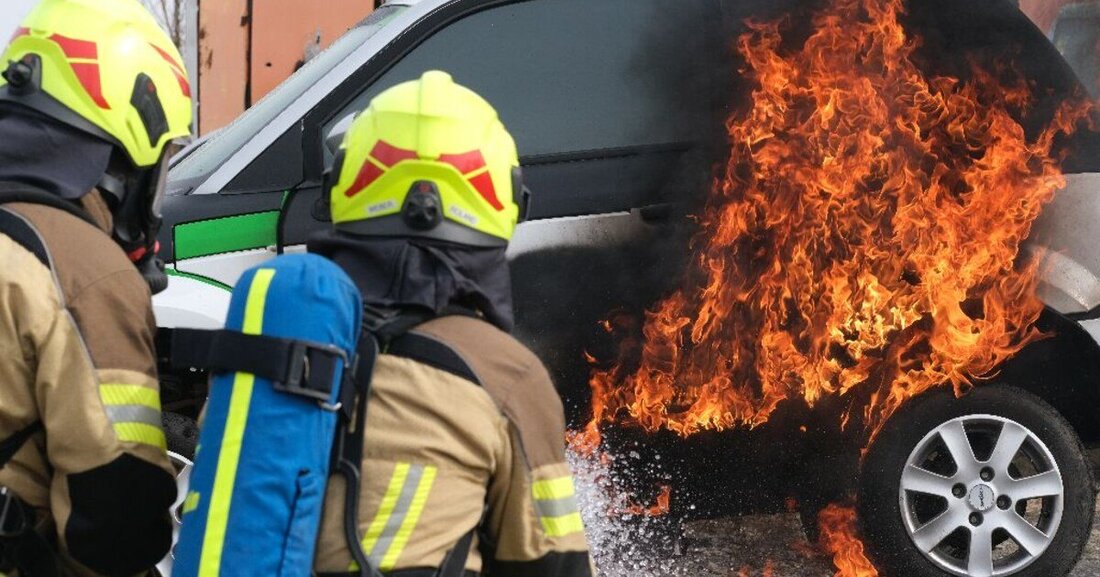When electric cars catch fire
HV trainers Emanuel Wulgarellis and Andreas Nunberg staged an attempt to extinguish a burning electric car.

When electric cars catch fire
What happens when a Think City electric car starts to burn after being hit by a car or running over a bulky object was impressively experienced at the fire site in Stockerau, Lower Austria. The lithium-ion battery in the vehicle floor caught fire, set the plastic body on fire and defied all attempts to extinguish it. Conclusion: The vehicle burned out completely. The high-voltage trainers Emanuel Wulgarellis and Andreas Nunberg, together with the Vienna professional fire department and Rosenbauer, the Upper Austrian manufacturer of fire equipment, invited people to the impressive fireworks display to illustrate the dangers of a battery fire. Another fire and extinguishing test was carried out with a battery pack consisting of a total of 18 so-called pouch cells. Modern electric cars contain several such battery packs; they contain the fire-hazardous liquid electrolytes that are used in modern lithium-ion cells.
The burning battery cell spits bright flames and white smoke into the air, and after brief phases of apparent calm the fire starts again - until after about an hour all 18 pouch cells have burned down. The chemical process cannot be completely interrupted. However, the fire department can use a special hydraulic spike developed by Rosenbauer to direct water into the interior of the battery. The cooling temporarily calms the fire, but it can flare up again at any time. Roman Sykora and Marcus Wallner, both on-call officers in the Vienna professional fire department with chemical training, warn of the toxic cocktail in the smoke of a battery fire. “The black smoke is comparatively harmless, but the white smoke is even more toxic,” says Sykora. In addition to aromatic hydrocarbons, which are considered carcinogenic, they also contain hydrochloric and sulfuric acid vapors, cyanides, carbon monoxide, phosphoric acid and heavy metals such as nickel, manganese and cobalt. The experts therefore recommend approaching a battery fire only with heavy breathing apparatus and a tailwind.

 Suche
Suche
 Mein Konto
Mein Konto